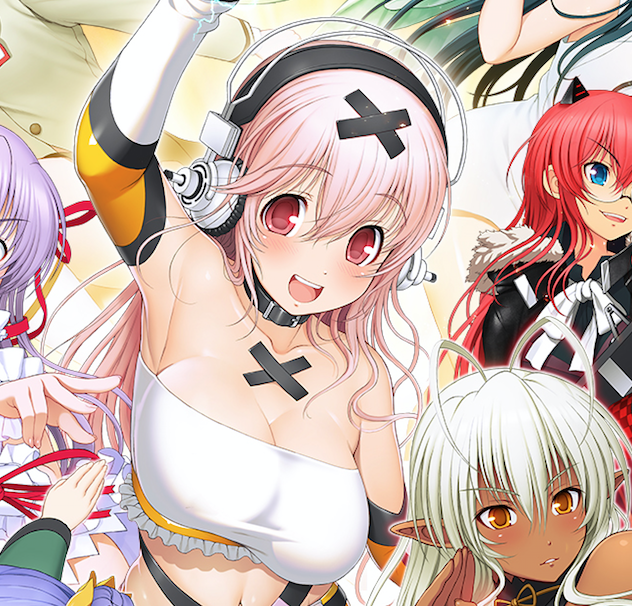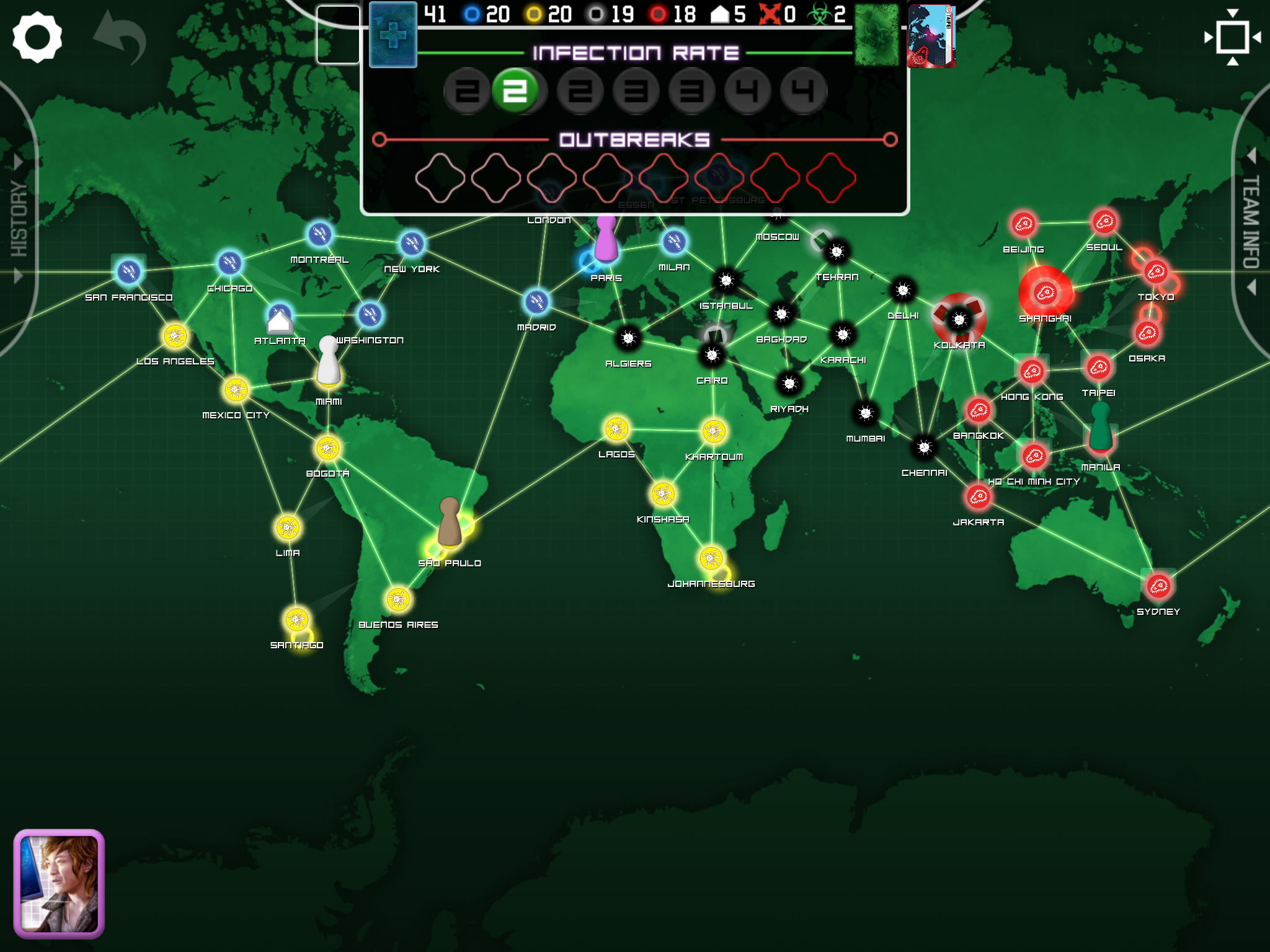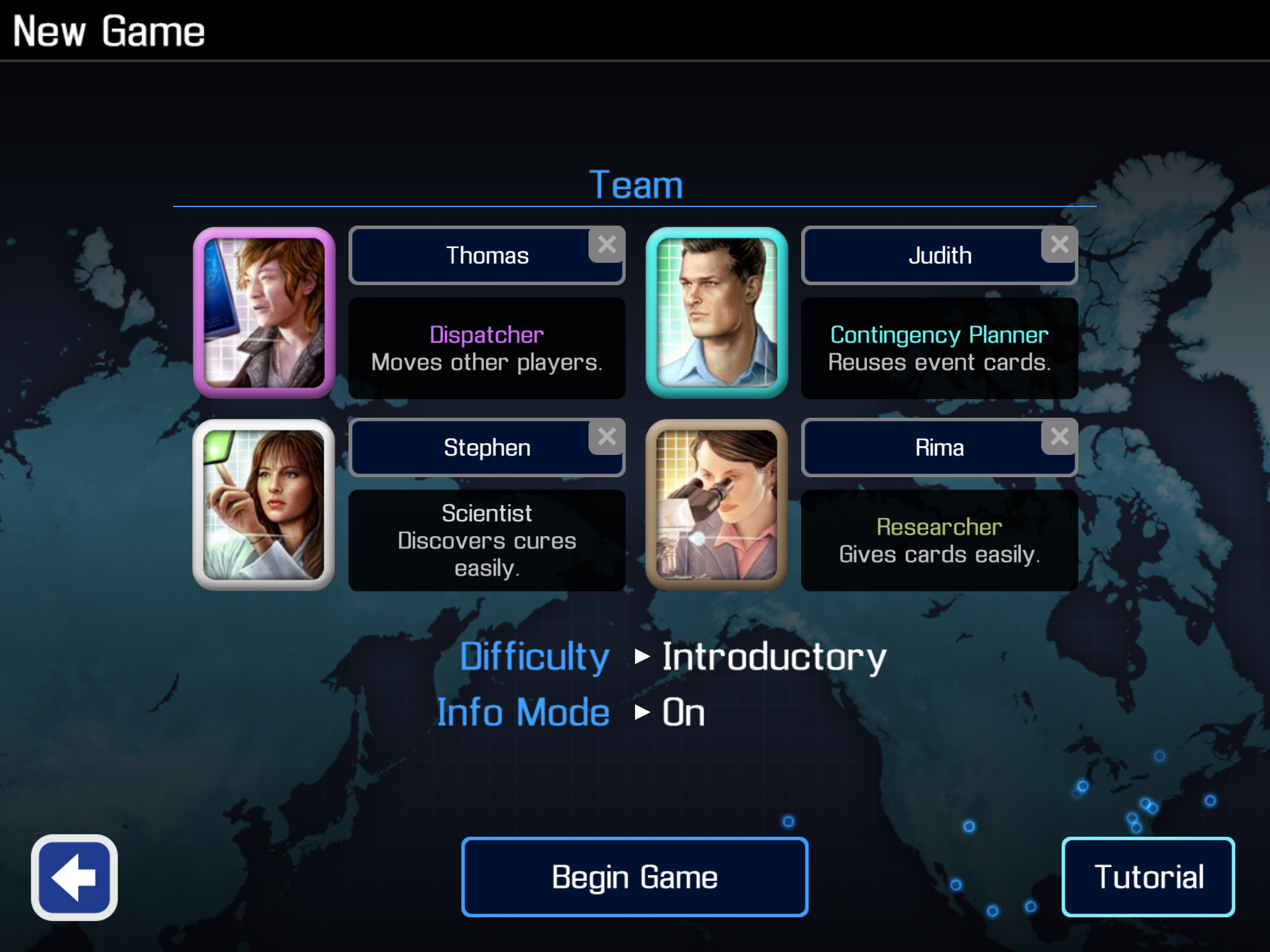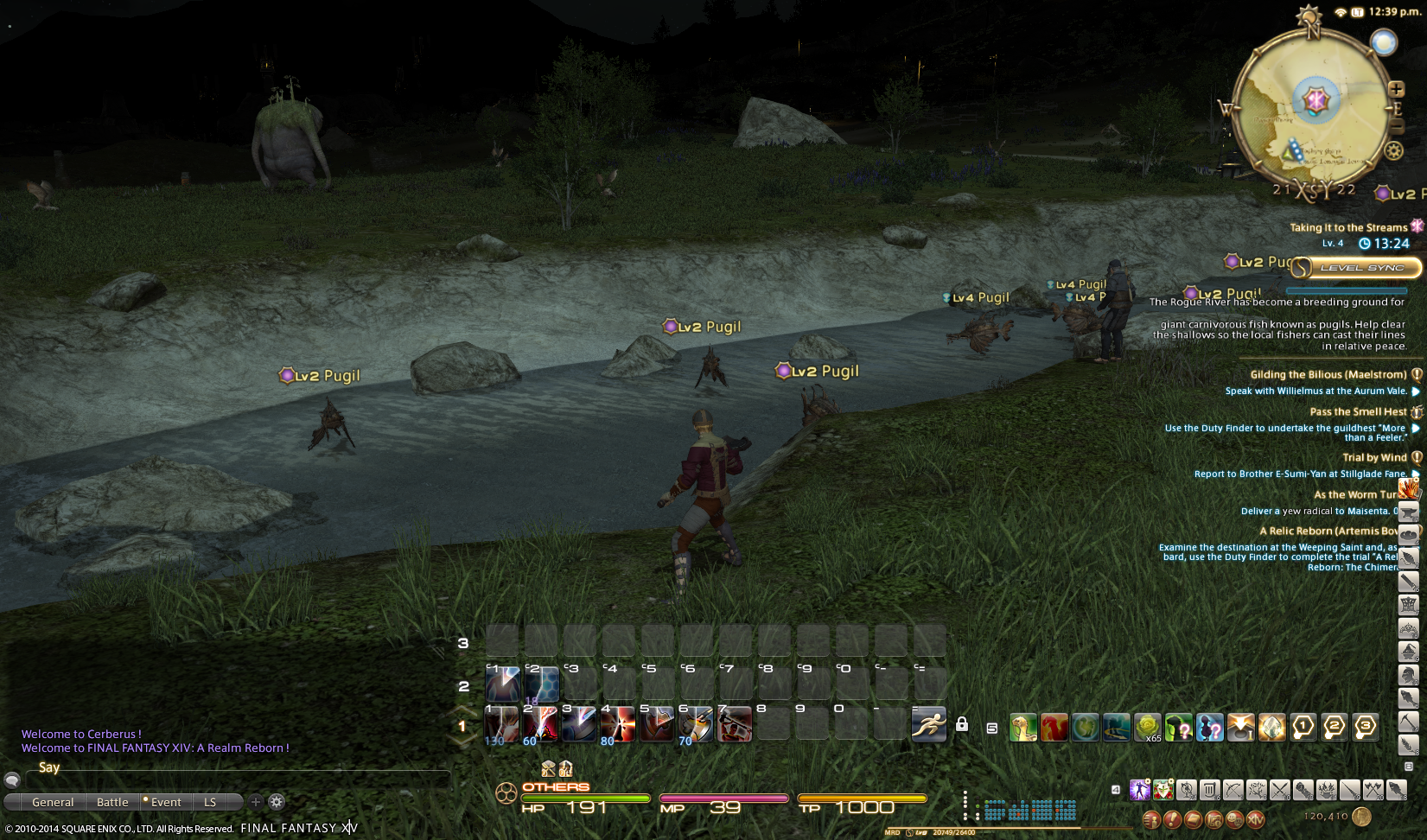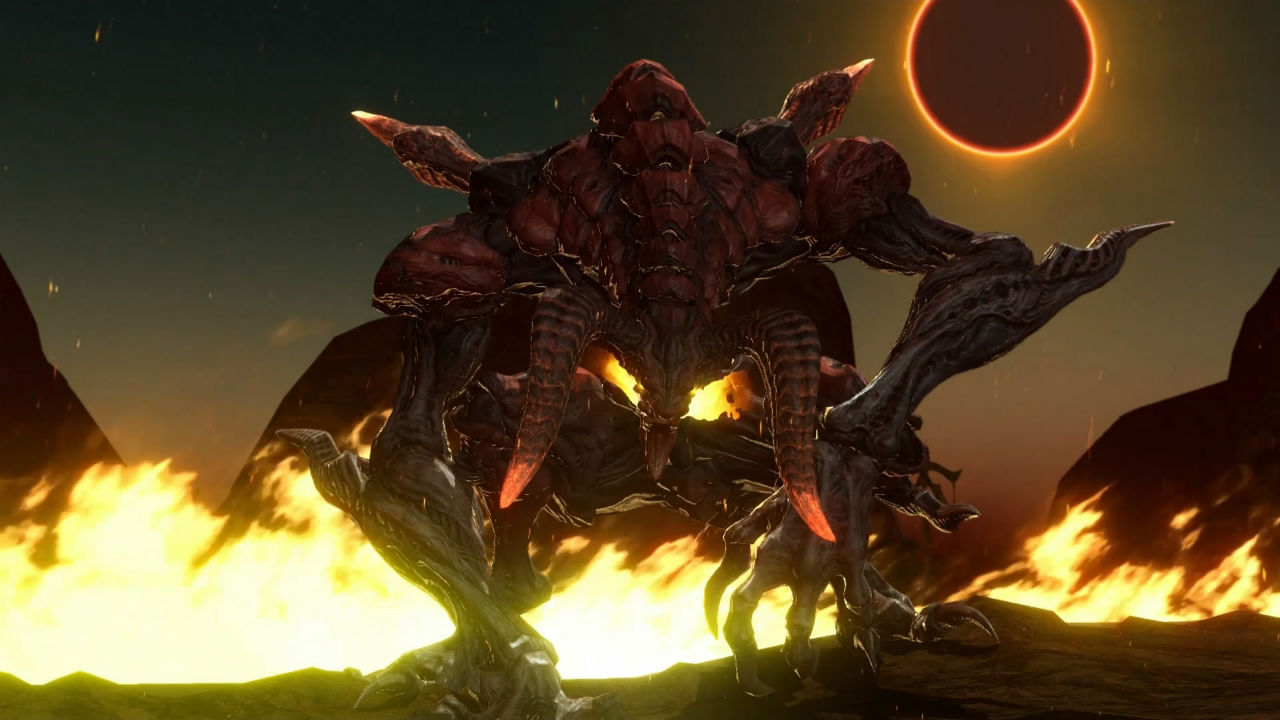Tokyo never had it easy when a monster (aka Kaiju) attacks it's shores, it's a really bad day when up to 6 invade and battle between each other over the the land. That is the premise of King of Tokyo a board game for 2 to 6 players competing for victory points using dice and cards. Earning 20 victory points wins you the game, however if earning points is not to your liking then being the last monster standing also wins you the game.
The basic setup on the game is as follows each player takes one of the 6 monsters, choosing from classic monsters such as The King (a version of King Kong), Giga Zaur (Godzilla's cute version?) and the Kraken (whom does not need releasing), along side more different monster designs, Alienoid, Cyber Bunny and Meka Dragon. Once selected the players take their corresponding character card setting their Life to 10 and Victory Points to 0, and everyone places their monster outside the board. All other tokens for effects and power are set aside the board as well as shuffling the Special Cards and placing three next to the board in a sort of shop style.
The player's turn order is as follows
-
Rolling then re-rolling the dice
-
Resolving the dice result
-
Buying cards (which is optional)
-
Ending their turn
The game starts by rolling 6 dice, players then choose which if not all dice to re-roll, doing so twice more, after the third roll or if the player chooses to keep the dice on the other rolls scores whatever is on those dice, those players with the concept of the game Yatzee would find this familiar, although throughout the game cards can change the amount of dice and how many re-rolls can be made.
As the main source of influence in the game the dice are not your standard D6, instead these come with their own faces. The numbers 1, 2 and 3 represent the number of Victory Points earned, rolling three of the same number nets you those points, rolling extra will only net you an extra point, for example rolling four 2s will net you 3 points, however rolling five 1s will net you 3 points. The Energy symbol represented by a lighting bolt earns a player one green Energy Cube, these are normally used to spend on the cards, but have other uses too depending on certain cards, and in later expansion's powers.
If the player wishes to defeat opposing monsters by taking them out of the game the Attack face (represented by a paw) is a good choice, the way this works with each Attack scored a player outside Tokyo attacks the player or players in Tokyo, where as those in Tokyo attack everyone outside the board. Taking a player's monster down to 0 knocks that player out of the game, as stated the last monster standing wins. To counter damage the Heal face (represented by a heart) heals a monster by one Heal scored up to the maximum of 10, although cards can extend that.
The key objective of the game is to control Tokyo, the first player to score an Attack in their final roll (or choose to hold one over from other rolls) gets placed within Tokyo City, this automatically scores them one Victory Point just by moving there. The point of holding the city is that if the player is inside Tokyo at the start of their turn they gain 2 Victory Points, however the trade off is that they cannot heal by scoring on the dice, although healing by other means is allowed.
This sets up an interesting situation for the players to either play passively and score their own Victory Points via dice rolls or directly attack the player in Tokyo. By doing so gives the player in Tokyo the option to give up Tokyo to the attacking player scoring the attacker the Victory Point and quite possibly the game their next turn, or hold out in the hope they play well on their next turn and keep control of Tokyo. To further things in the game for 5 or 6 players Tokyo Bay opens up allowing a second player to enter Tokyo, under the same rules as normal, as stated before both players will be attacked at once within Tokyo, allowing the players outside to try and bait one player to drop from Tokyo and keeping the other vulnerable for a possible defeat on the next players turn. Once there are 4 players or less in the game only Tokyo City is used reverting to normal play.
What can turn the game from a losing situation to a monster on a roll is the Special Cards, these cards are the powers a monster may have during the game, ranging from Giant Brain which allows for an additional re-roll, to more cunning powers Fire Breathing which both players left and right of that player take damage, despite not being that players target. Most powers are permanent to the player until the die, but certain cards labelled Discard happen with immediate effect, such as Gas Refinery with awards 2 Victory Points and deals 2 damage to all other players, but these are normally a high cost to use compared the the general powers. To pay for all these powers the Energy cubes are used, a player can buy as much as he or she wanted during the end of their turn but there is also a second option of paying two cubes to clear the current selection and end on a new set of three, this is extremely useful in preventing a person hoarding Energy to buy a select power.
Currently there is one expansion and one collector pack for the game, the expansion, Power Up! adds not only a new monster to select Pandakai, but also personal monster powers called Evolutions, these either come in a permanent power or discard the card at any point to effect your current roll and/or another player in the game. These powers are drawn from the player's own personal deck on a score of 3 Heal dice, which also heal if not within Tokyo, which again give another opportunity for a comeback, Evolutions can also be gained within Tokyo making the Heal score useful within it.
The collector pack, Halloween, is more of a theme pack, adding Pumpkin Jack and Boogie Woogie to the game as monsters (each coming with Evolution cards to support Power Up!) and orange Halloween dice, although this could also be deemed a mild expansion with the inclusion of 12 Costume cards, these are themed Special cards which can be stolen during the game by rolling Attack dice. Both Power Up! And Halloween offer several rule variants to their own game additions customising play dependent on the group.
King of Toyko as a whole is not only a good introduction game for either families or people new to board games but still a great 'appetiser' game while waiting for others to start a night of gaming. The game is simple enough to understand the basics but offers enough complexity to offer a bit of a challenge for veteran gamers. The game and monster design is colourful and the image quality is a great family friendly design but not so much it detracts from adult players, all the tokens are well made and the cards are a normal size with slightly larger print then normal but those with vision problems may still have issues. The dice themselves are larger then a standard D6 but are barely noticeable, one suggestion I would make is have either the game box or a 'dice wall' for players to use as the dice can be rolled off a table and/or into the game area itself, something not included in the box but is more a personal thought then a major issue.
The rule 'book', more of a sheet really, is well laid with just enough balance between written and visual content is describe the game, with the terminology and notes breaking up sections as you read, examples are highlighted and an overview of some more complex Special cards are given at the end of the page.
With the additional content personally I would choose to buy Power Up! as soon as possible after a few games have been put under the group's belt as personal choices of monsters will add a new flair with the Evolutions and a mild meta-play will start to form. The Halloween pack is still optional, but it doesn't change the game as much as Power Up! did.
The game RRPs around £25 with both additional packs around £12-15

